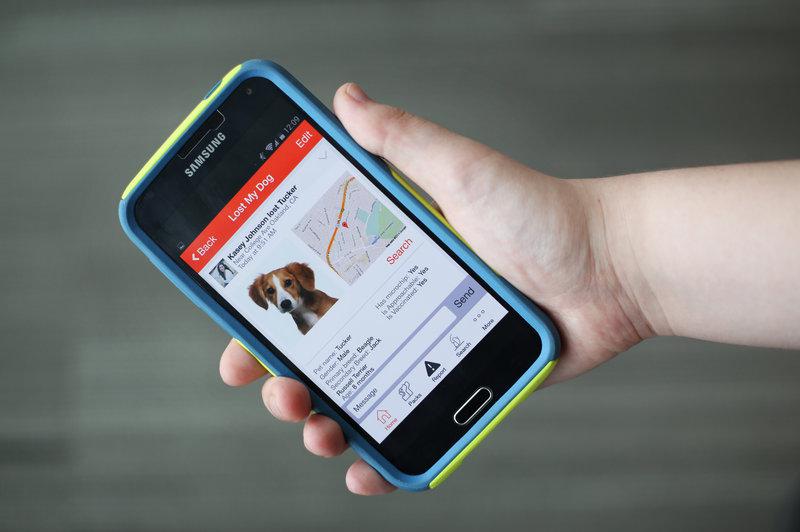
How many times have you seen a "lost dog" poster hanging up on a street corner? John Polimeno was at a coffee shop when he spotted one of those posters. He thought about his own experience looking for a lost pet, with crying children in the backseat, and knew there must be a better way. After seeing several of the coffee shop customers glued to their smartphones, Polimeno had an idea.
It's a smartphone app called Finding Rover, and it uses facial recognition technology to reunite lost dogs with their owners. Polimeno is the founder and CEO of Finding Rover. Launched in the Apple Store in late 2013, followed by Android and Web versions, the app uses software developed by Polimeno and a team at the University of Utah. They studied facial recognition technologies for pets, locating all of their unique facial features.
It works like this: Pet owners upload a picture of their dog. Shelters and other Finding Rover users upload pictures of found dogs. Once a dog is reported found, its picture is scanned through all of the "lost" pictures. A found dog and lost dog are then matched based on the technology, and the worried owner is notified.
Laura Steveson of Chula Vista, Calif., was one of those owners. She describes her 5-year-old Brussels Griffon, Monchichi, as "her everything." They have been through a lot together: divorce, remarriage, moving, and everything in between. When Steveson and her husband traveled to City of Hope Cancer Center for his illness, Monchichi went missing. Steveson says she "fell to pieces" and her husband, near the end of his week-long treatment, started searching for ways to find their pet. He happened upon Finding Rover, and Steveson uploaded a picture of Monchichi. Minutes later, Steveson received an email that her dog was safe and found at the San Diego County Department of Animal Services. She was glad to receive piece of mind so quickly in such a stressful situation.
Currently, Finding Rover only helps find lost dogs, but next month cats will be added to the app.
本时文内容由奇速英语国际教育研究院原创编写,禁止复制和任何商业用途,版权所有,侵权必究!
1.How did John Polimeno get the idea of inventing a new smartphone app?
A He lost children many times.
B He saw the dogs on street corners.
C He found posts in a coffee shop.
D He asked many shop customers.
解析:选C。推理判断题。根据第一段第二句的John Polimeno was at a coffee shop when he spotted one of those posters可知他在咖啡店看到了寻狗启事,因此他有了一个迅速找到小狗的方法。
2.The Finding Rover was based on _______.
A facial recognition technology
B Apple Store
C animals’ unique emotion
D the interests of dogs
解析:选A。细节理解题。根据第二段第一句的...it uses facial recognition technology to reunite lost dogs with their owners可知该软件是以脸部识别技术为基础的。
3.What should pet owners do first if they want to use Finding Rover?
A They should get in touch with other shelters.
B They should scan through the lost pictures.
C They should take a photo of their own dogs.
D They should upload the pictures of lost dogs.
解析:选C。细节理解题。根据第三段第一句的...Pet owners upload a picture of their dog可知他们要先上传自己小狗的图片,因此他们首先要给自己的小狗拍照。
4.The underlined word “notified” in the third paragraph may mean ____.
A stopped
B informed
C treated
D rescued
解析:选B。从前面的A found dog and lost dog are then matched based on the technology可以得知通过比对就能找到丢失的小狗,然后小狗的主人就可以被“告知”,因此该词的意思为informed。
5.The writer used the example of Laura Steveson to show_______.
A the deep feeling between human and dogs
B the success of this new way of finding dogs
C the difficult way of searching for lost dogs
D the hard life the couple have been living.
解析:选B。写作手法题。根据第四段最后两句的Minutes later, Steveson received an email that her dog was safe and found at the San Diego County Department of Animal Services. She was glad to receive piece of mind so quickly in such a stressful situation可以得知在这个软件的帮助下,他们很快找到了他们丢失的小狗,因此作者用这个例子是为了说明这个软件是很好用的,也是非常成功的。